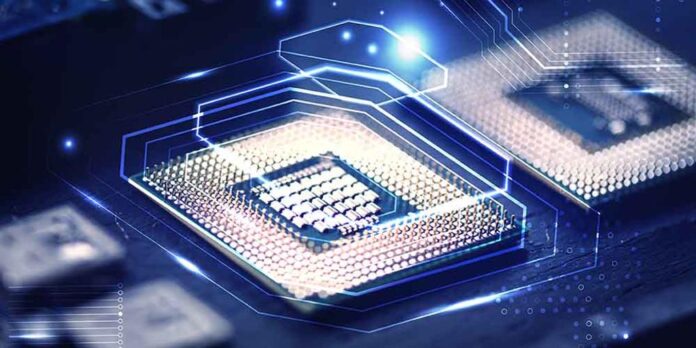Dikang, chinaworker.info
The tech war between China and the US is a crucial front in the wider Cold War between rival imperialist blocs. According to the Centre for Strategic and International Studies, a US think tank, there are two dates from 2022 that will “echo in history”. The first is 24 February, Russia’s invasion of Ukraine. The second is 7 October, when the Biden administration imposed wide-ranging export controls to cut off the supply of advanced microchips to China.
The US strong armed Japan and the Netherlands into joining this microchip war. These two countries have a world-leading position in chip manufacturing tools (Japan) and advanced lithography machines (Netherlands) and without their support the US embargo would be far less effective. The aim of the US-led ban is to block China’s access to high-end chips for AI and supercomputing. It is also to ensure US has the ultimate control of database on global scale, which is linked to financial, technological and information warfare. Ultimately, the US policy is about military technology – to prevent the PLA from further modernizing its weapons systems to give the US military a technological advantage in the event of a future war.
- The US financial speculator Ray Dalio compared today’s situation to 1940, when the US blocked Japan’s access to oil on the eve of the two going to war. “Chips is like oil back then, and it’s a very, very, very delicate issue,” he said. But as Dalio added, “Neither country wants to go to war. Everybody’s afraid of what that war would be like because it would be devastating economically and politically.”
War between imperialist rivals, either directly or in the form of ‘proxy’ clashes, is inevitable under imperialism, as Lenin explained. While socialists do not believe war between the US and China is an imminent prospect, not even a Taiwan war in the short-term, this horrific prospect cannot be totally excluded unless capitalism and imperialism are overthrown by a working class-led revolution to establish socialism.
“Self-reliance”
The tightening US tech blockade is forcing Xi Jinping’s regime to accelerate its plans for “self-reliance”. Reports of a new plan to raise 300 billion yuan for the semiconductor sector surfaced in September. This would be the third and biggest fund launched by the China Integrated Circuit Industry Investment Fund, also known as the ‘Big Fund’.
Earlier rounds in 2014 and 2019 raised 138.7 billion yuan and 200 billion yuan respectively. But the biggest source of investment has always been state-owned enterprises and local governments. There are justified doubts that the latter especially will be strong enough financially to contribute. The ‘Big Fund’ has also been plagued by scandals involving corruption and wasted investments. Last year saw a wave of arrests of former top executives and a significant fall in new investments in the semiconductor sector probably linked to the arrests.
Huawei was blacklisted by the Trump administration in 2018, with US companies banned from selling US-designed semiconductors, software and components to the Chinese company. The policy was widened to include foreign companies which face US sanctions if they sell products to Huawei containing US designs or components. Biden’s historic 2022 export controls meant in effect applying the same methods against the whole Chinese tech sector, which became “one big Huawei”.
Widening tech war
With the escalation of the imperialist Cold War since the start of the Ukraine war, an increasing number of western capitalist governments have fallen into line with the US anti-China strategy. Eleven of 27 European Union governments have banned Huawei and ZTE equipment from their 5G networks. The German government, which previously moderated its stance and tried to “hedge” between China and the US, is reportedly drafting a new law to ban telecom companies using Huawei and ZTE in their “core” systems by 2026.
Clearly, the fanfare surrounding the launch of Huawei’s Mate 60 smartphone at the end of August was heavily influenced by geopolitics. It is hardly coincidental that Huawei’s launch occurred during the visit to China of US Secretary of Commerce Gina Raimondo.
This “technological breakthrough” is being used to bolster the position of Xi Jinping, to show China is capable of overcoming the US-led blockade and winning the tech war. As our article on Huawei’s new chip shows, there are grounds to doubt this. Whether real or not, a Chinese “tech success” serves to project an image of strength towards developing countries and members of the Belt and Road Initiative, which is now a strategic focus for Beijing as a counterweight to the increasing anti-China protectionism from Western capitalism.
The capitalist CCP regime is prioritizing funding to the tech sector and military-related sectors at the expense of building up cash-starved social security, pensions and healthcare provision. This is a mirror image of the imperialist policies of both big business parties in the US. On both sides of the new Cold War, capitalist regimes are lowering real wages and attacking workers’ rights while transferring ever greater sums of state-backed capital to the tech war and the military. Workers in China and the US need a mass working class socialist alternative for peace, a democratically managed publically-owned economy and international solidarity.




